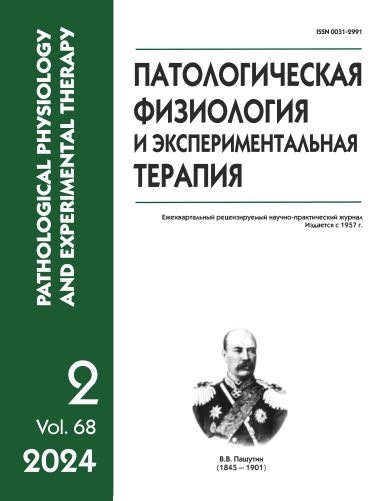Ядерные рецепторы к мелатонину
DOI:
https://doi.org/10.25557/0031-2991.2024.02.87-96Ключевые слова:
мелатонин, сиротские ядерные рецепторы ROR/RZR, эпифиз, защитное действие, профилактика, лечениеАннотация
Мелатонин – гормон, продуцируемый в центральной нервной системе (эпифизе) и периферических тканях (аппендиксе, поджелудочной железе, надпочечниках, тимусе, простате, яичниках, плаценте). Его секретируют клетки крови (тромбоциты, лимфоциты и эозинофилы) и эндотелий. Мелатонин обнаружен в тучных клетках, эндометрии, мозжечке, нейроэндокринных клетках воздухоносных путей, параганглиях, внутреннем ухе, печени, желчном пузыре, корковом слое почек. Ключевая роль гормона мелатонина определяется тем обстоятельством, что ритмам его продукции подчинены все эндогенные ритмы организма. Постоянно увеличивается число публикаций, указывающих на многогранность влияния мелатонина на организм и его активное участие во многих физиологических и патологических процессах. Имеются убедительные данные о том, что мелатонин участвует, практически, во всех процессах жизнедеятельности, контролируя многие функции организма – сон, деятельность иммунной, эндокринной, сердечно-сосудистой систем, проявлением чего служат универсальные терапевтические свойства мелатонина, которые, в свою очередь, определяются своеобразием его биологической роли. Поскольку мелатонин с легкостью проникает через биологические мембраны, он может оказывать свое действие практически во всех клетках. Некоторые из его эффектов рецепторно опосредованы, другие не зависят от рецепторов. Основные эффекты мелатонина связаны с действием на мембранные рецепторы МТ1 и МТ2. Они относятся к семейству рецепторов, связанных с G-белками. Эти рецепторы отвечают за хронобиологические эффекты и регуляцию циркадного ритма. МТ1 и МТ2 также представлены в периферических органах и клетках и способствуют, например, в некоторой степени иммунологическим реакциям и вазомоторному контролю. МТ1 в большей мере ответственны за вазоконстрикцию, в то время как МТ2 вызывают вазодилатацию. Относительно недавно открыты ядерные рецепторы мелатонина ROR-α/RZR-β. По-видимому, через них опосредуются многие иммуностимулирующие и противоопухолевые эффекты гормона мелатонина. Антиоксидантная функция мелатонина частично основана на рецепторном взаимодействии, некоторые антиоксидантные свойства в их обеспечении участия рецепторного аппарата не предполагают. В обзоре рассматриваются и обсуждаются имеющиеся в отечественной и зарубежной литературе сведения о потенциальной роли сиротских ядерных ретиноидных рецепторов подсемейства ROR/RZR в регуляции активности гормона шишковидной железы – мелатонина. Описаны механизмы взаимодействия рецептор-ДНК и известные коактиваторы, тканевые особенности экспрессии различных изоформ рецептора и ее регуляции. Проанализирован спектр вероятных мишеней для регуляции рецепторами, наиболее распространенными из которых в этом аспекте, являются лимфоидная и центральная нервная системы. Определены некоторые перспективы дальнейшего изучения мелатониновых рецепторов.Загрузки
Опубликован
2024-06-20
Выпуск
Раздел
Обзоры
Как цитировать
[1]
2024. Ядерные рецепторы к мелатонину. Патологическая физиология и экспериментальная терапия. 68, 2 (Jun. 2024), 87–96. DOI:https://doi.org/10.25557/0031-2991.2024.02.87-96.













